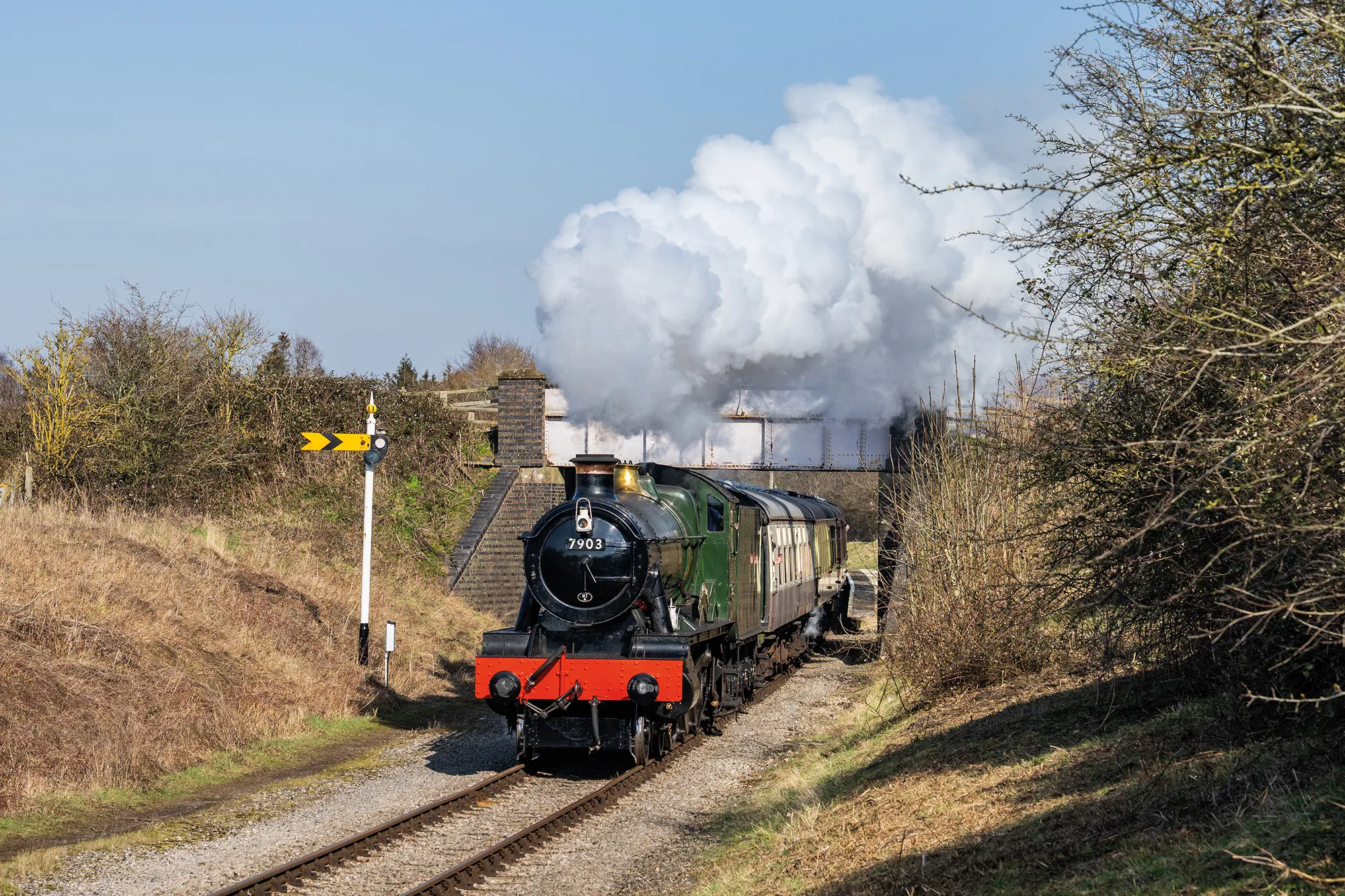Key Features
Although every inch a Great Western Railway thoroughbred, No. 7903 Foremarke Hall was one of the 79XX series, in the last batch of the Modified Hall class built at Swindon in 1949 under BR auspices.
The 79’s were known as ‘Greyhounds’ by footplate crew as they seemed to be somewhat fleeter of foot than their earlier classmates. 7903 distinguished itself in 1951 by deputising for the normal Castle on the Plymouth to Paddington boat-train and was the first locomotive to cover the distance in less than 4 hours.
It spent most of its working life at Old Oak Common shed, London and its final depot was Cardiff East Dock from October 1963 until withdrawal from service in June 1964. It was sold to Woodham Brothers scrap merchants, Barry South Wales where it languished until bought for restoration by a group of enthusiasts in June 1981, being the 129th loco to leave the yard.
It was then transported to the Blunsdon depot of the Swindon and Cricklade Railway to be restored in Wiltshire, stopping off on the way at Swindon Works to be displayed at their Public Open Day. The project has been funded by selling ownership shares in the loco within the Foremarke Hall Transport Group. Stripping down and the gradual rebuilding was mostly carried out in the open air by its members. Progress made rapid acceleration when the 7903 was safely housed within the walls of the superb new engine shed built at Hayes Knoll. Working to a very tight schedule Foremarke Hall made its public debut in steam on 20th September 2003 at the S & C R’s 25th Anniversary Celebrations.
A point of interest is that Foremarke Hall is named after the great house in Derbyshire that is now the preparatory school for Repton College. A wonderful co-incidence is that ‘Repton’ the Southern Railway Schools class 4-4-0 has also survived; what a day it would be to see the two together in steam.
Having enjoyed the hospitality of the S&CR during our rebuilding, once finished, we had to seek a new home with more than one mile of track for such a large locomotive,. After careful consideration of several candidates, the Gloucestershire Warwickshire Steam Railway in the Cotswolds was decided upon as our new home. Moving there in May 2004, 7903 has been a favourite among crews operating out of Toddington most reliably over its 10 year boiler certificate. During that time Foremarke Hall was an invited guest loco on the Severn Valley Railway and the Llangollen Railway.
Our partnership with the GWSR has been mutually greatly beneficial to where when our boiler ticket expired, our group with the help of several railway volunteers rapidly returned 7903 back into traffic for the 2016 season. Since then we have been involved in several exciting events including hauling the first passenger train out of the new Broadway extension and a very nostalgic return to the last Old Oak Common Open Day in September 2017. 81A was where 7903 spent most of its BR working life in steam days. To add to all this Foremarke Hall was invited by GWS at Didcot to participate in the launching of their new-build Saint No. 2999 Lady of Legend. These two locomotive together represented the first and ultimate versions of GWR 4-6-0 mixed traffic locomotives
Specification
- Wheel arrangement: 4-6-0
- Origin: Great Western Railway - although the final 79xx series was completed by British Railways at Swindon in 1949. The Hall class was introduced by C B Collett in 1928. The Modified Hall, designed by the last CME of the Great Western Railway, F W Hawksworth, was introduced in 1944. The final members of the class, built in 1949, had noticeable differences in the front-end appearance and a different bogie amongst other modifications.
- Introduced: 1944
- Working weight: 122 tons
- Driving wheels: 6' 0"
- Tractive effort: 27,275lbs
- Water capacity: 4,000 gallons
- Purpose: A powerful mixed-traffic locomotive, as at home on express passenger trains as on freight work. 330 Hall & Modified Hall locomotives were built and could be found all over the Great Western system. The final 79xx series had a reputation for fast running and in 1951, Foremarke Hall became the first locomotive to cover the journey from London to Plymouth in less than four hours. It was allocated to Old Oak Common for most of its life but its final allocation was Cardiff East Dock, from where it was withdrawn in 1964 and moved to the nearby Barry Scrapyard. The FHTG purchased it in 1981.






.jpg)





